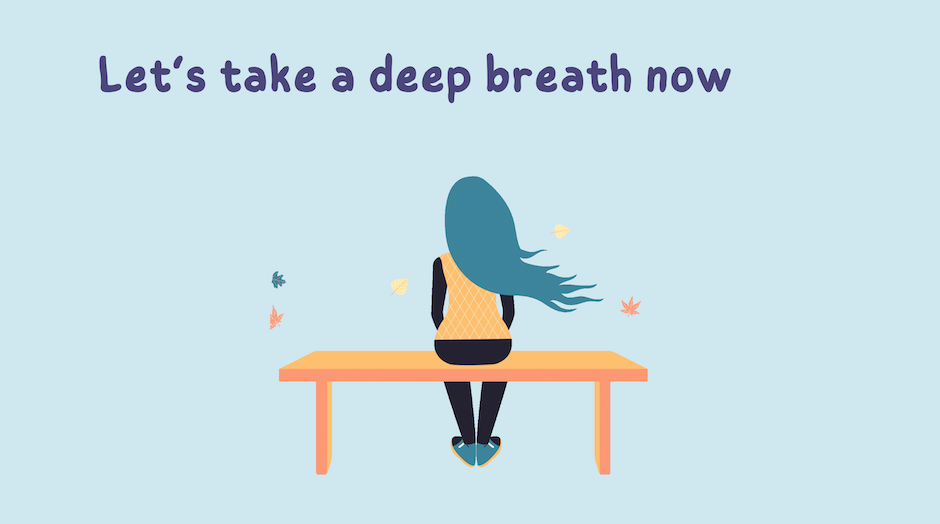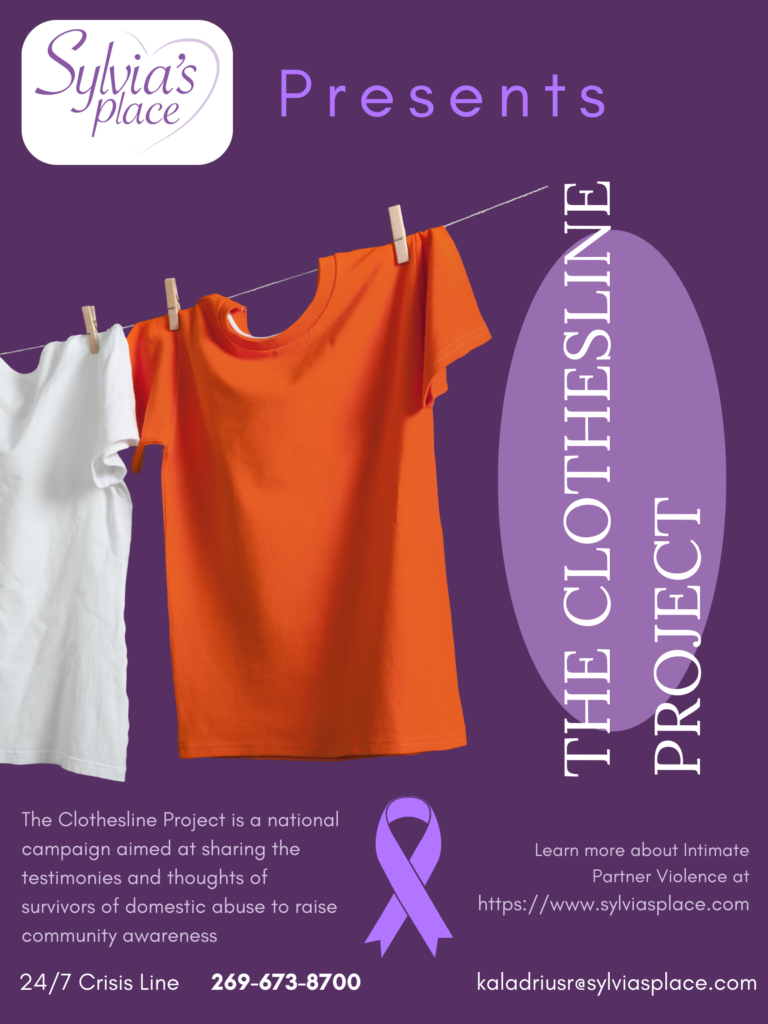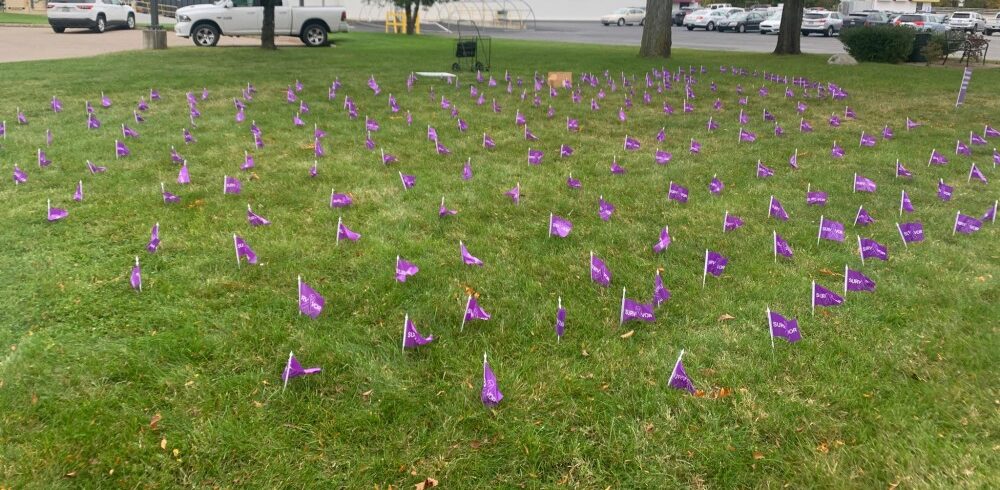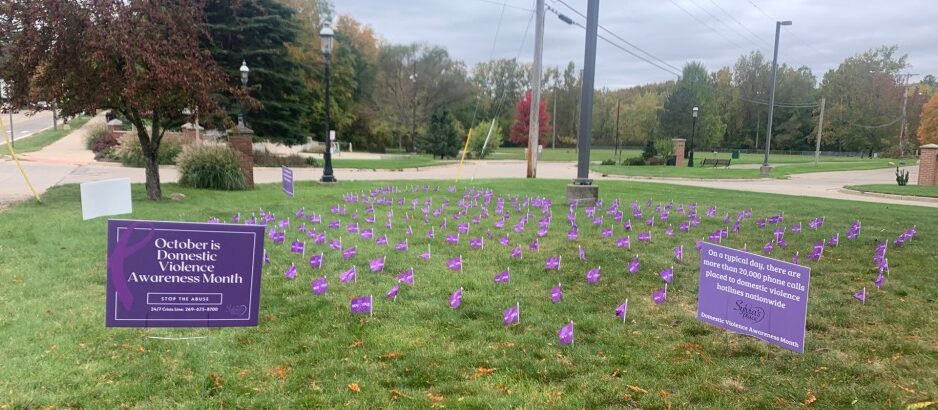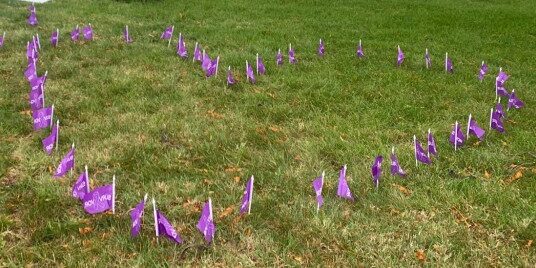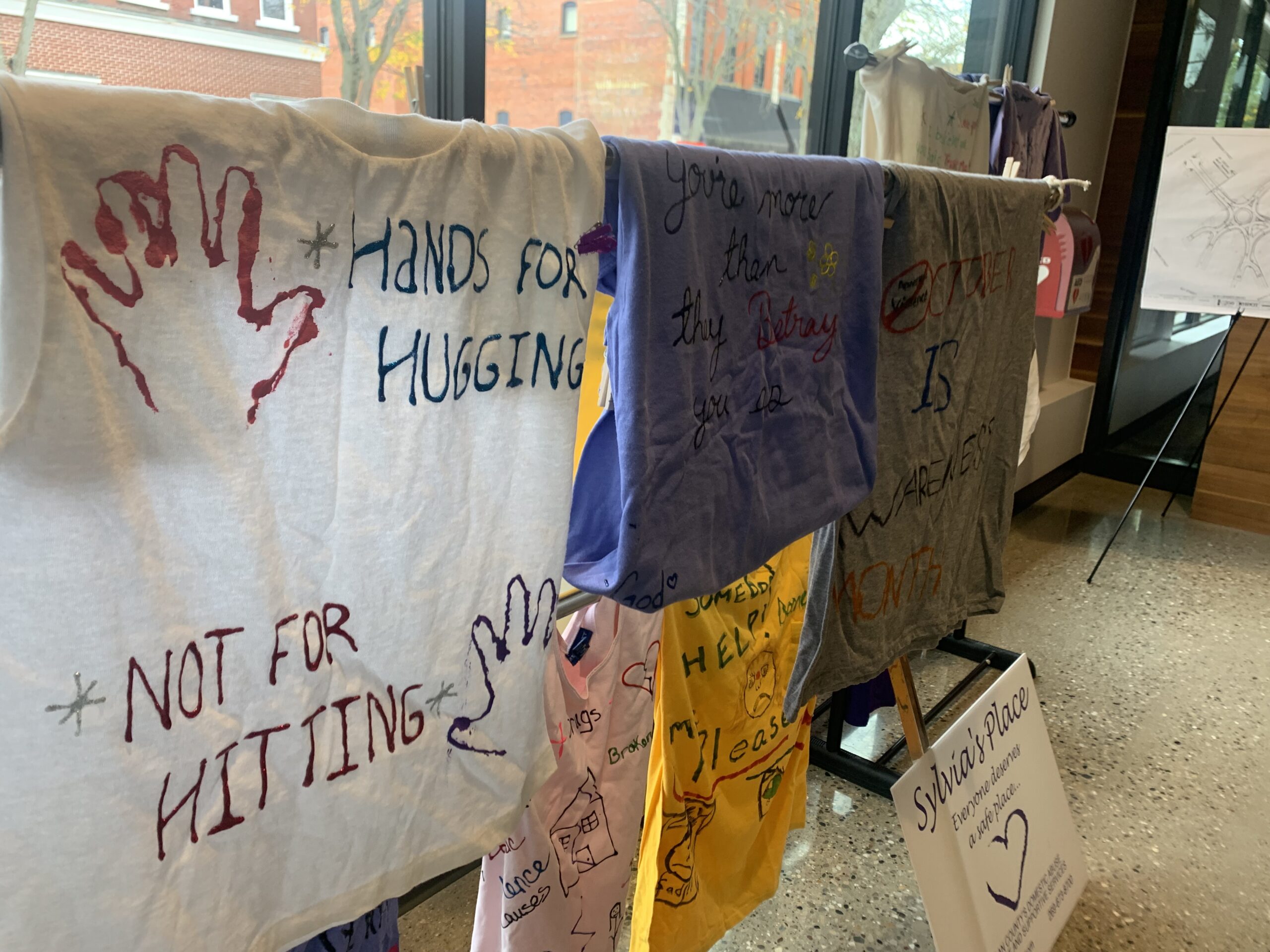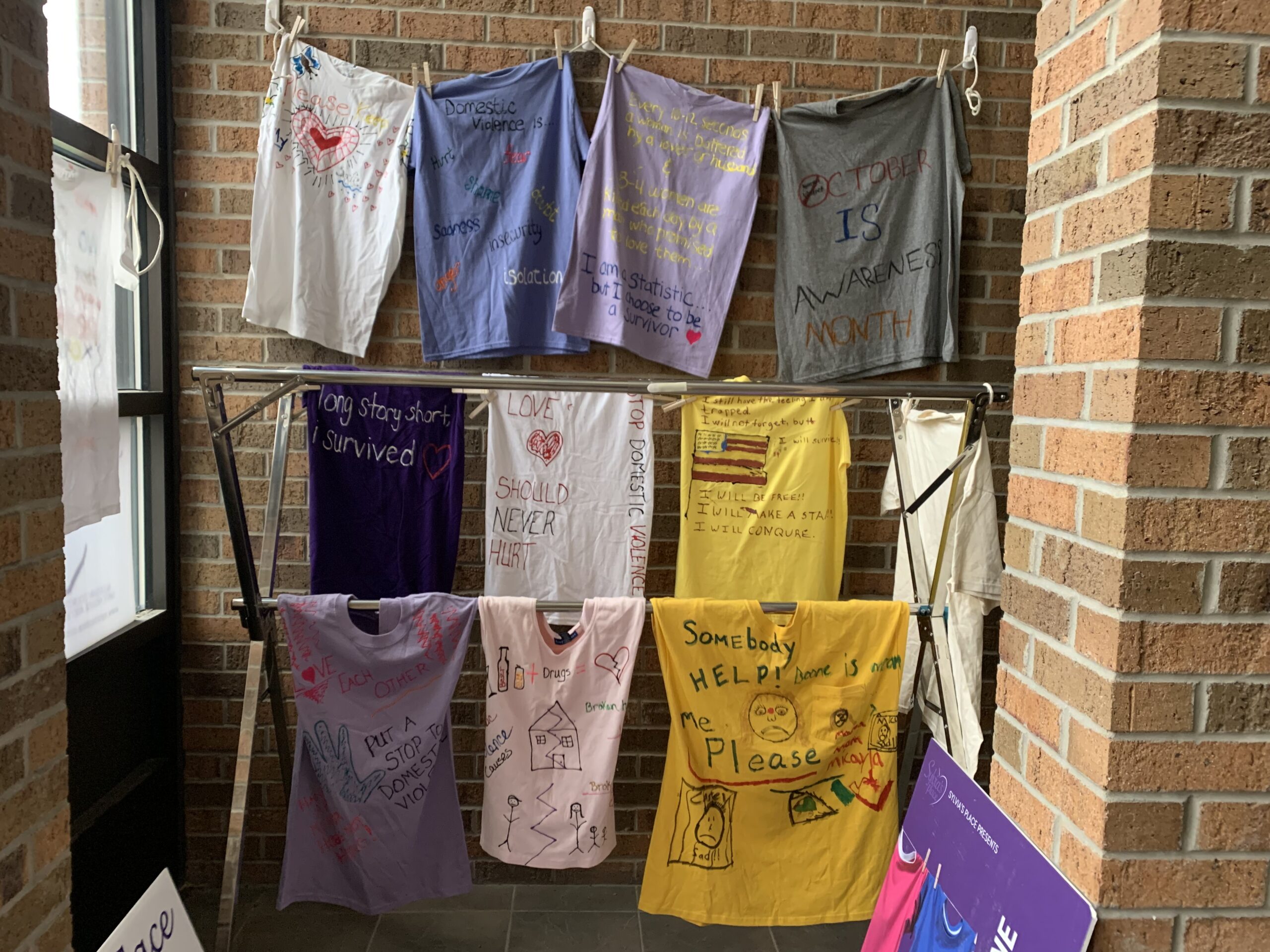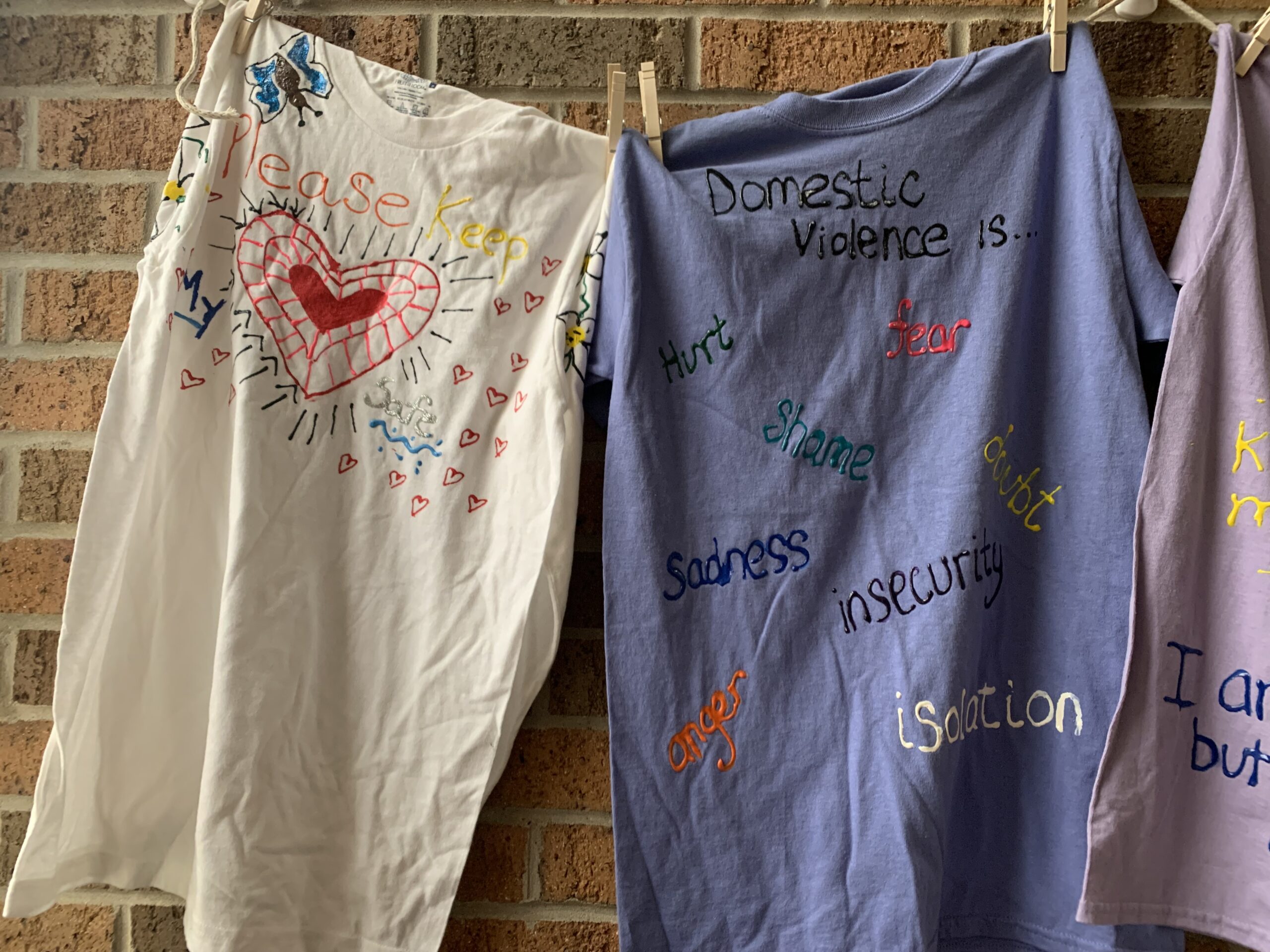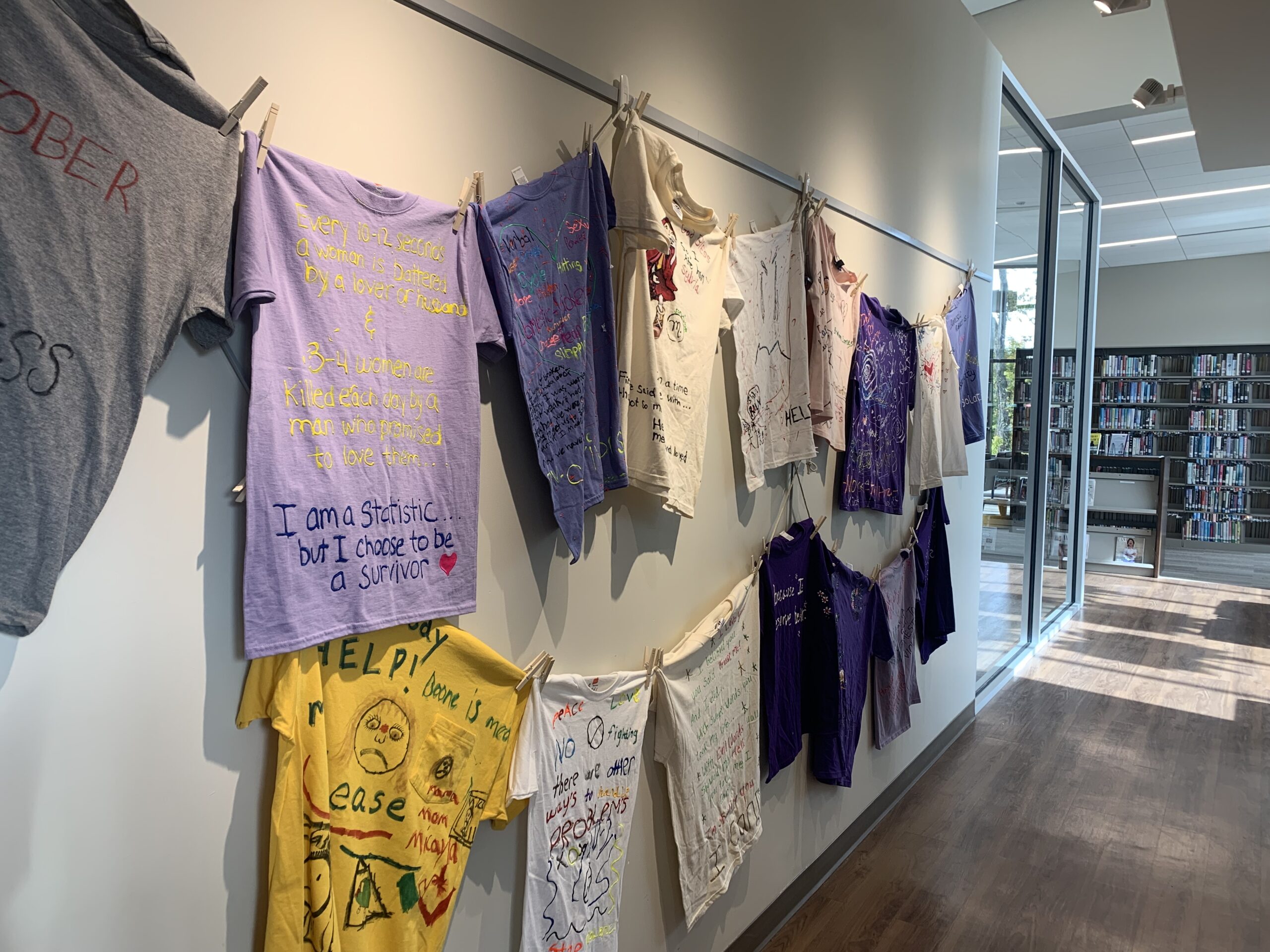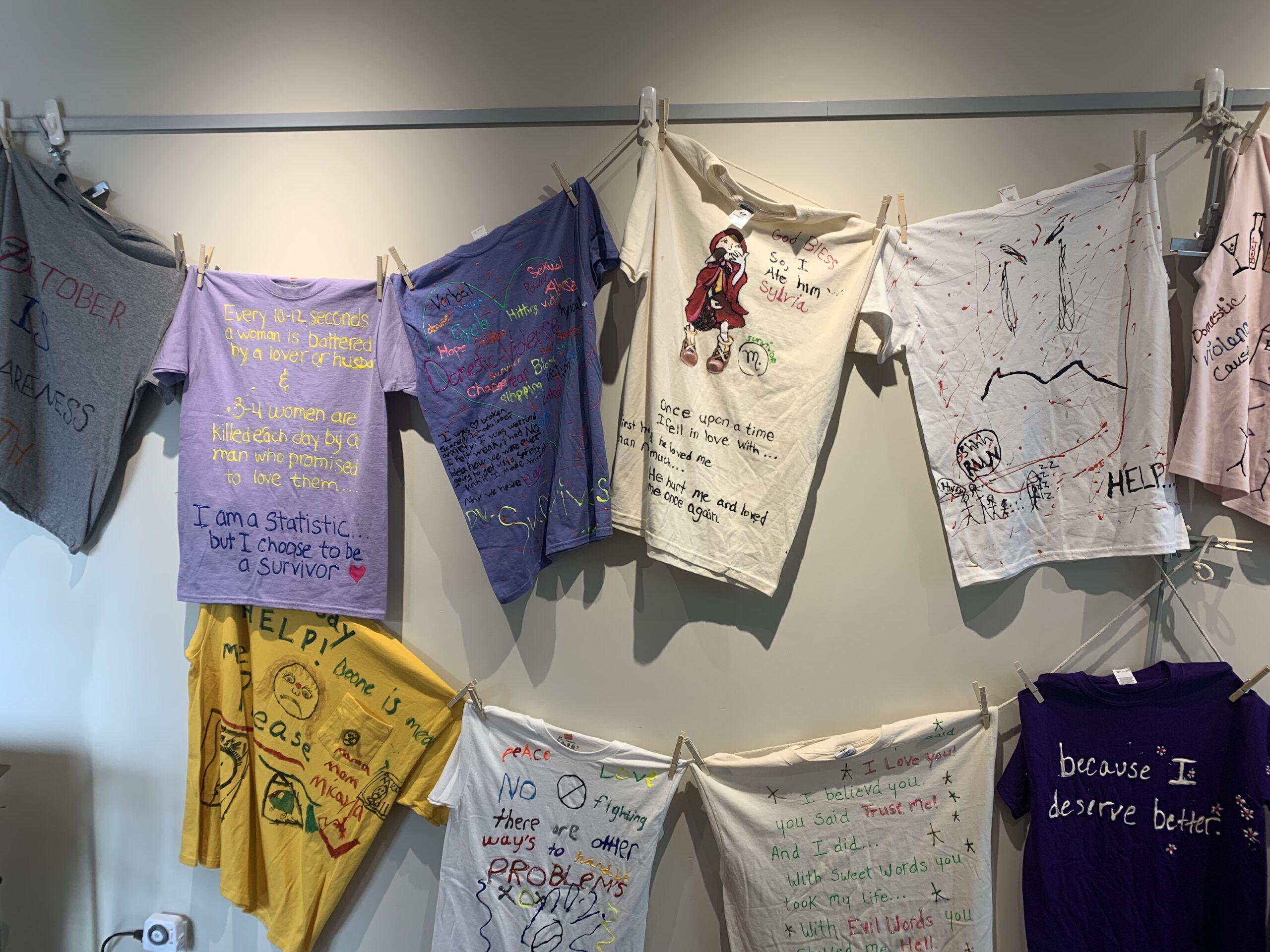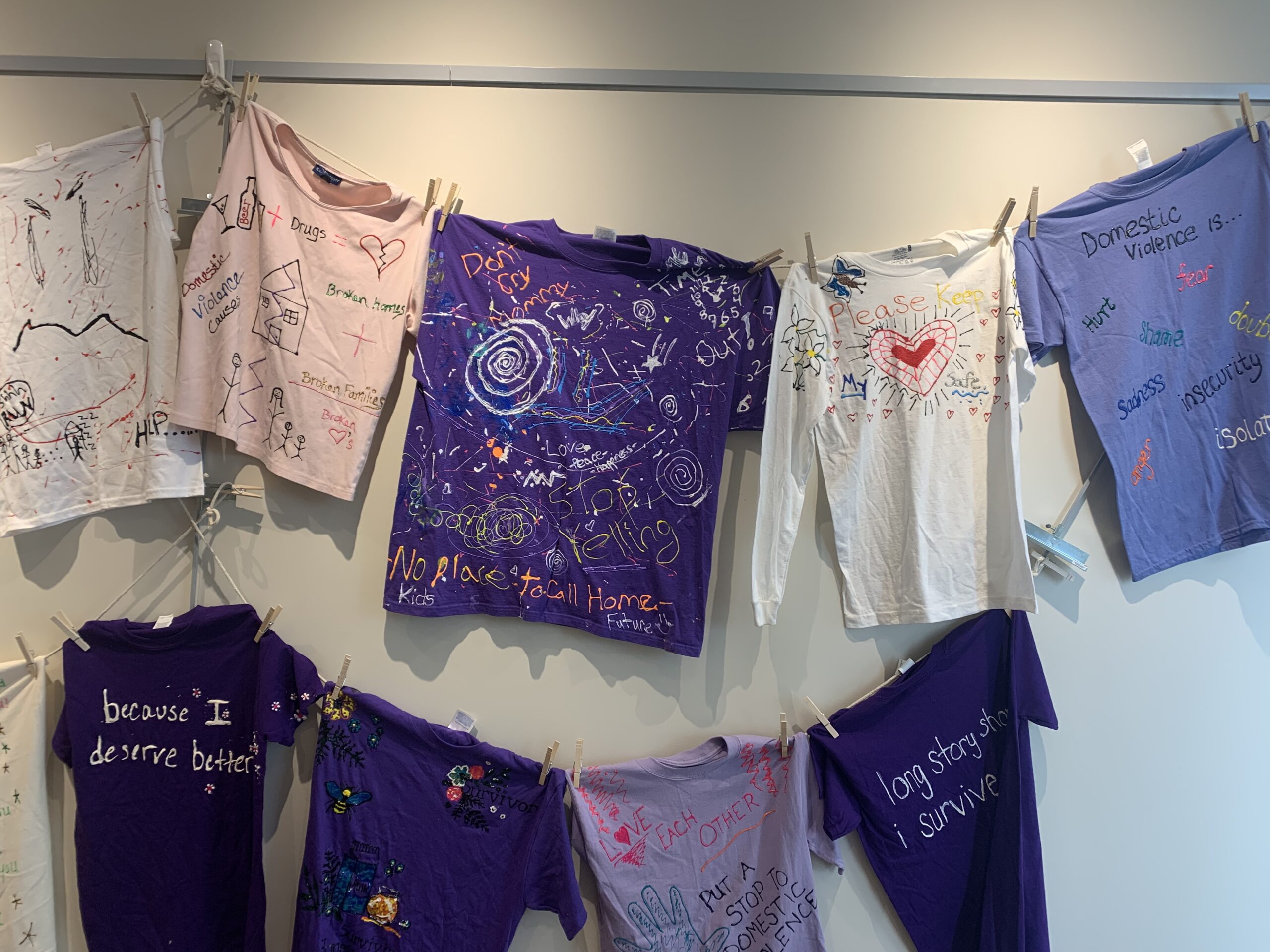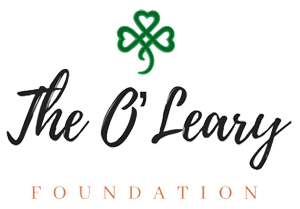Blog
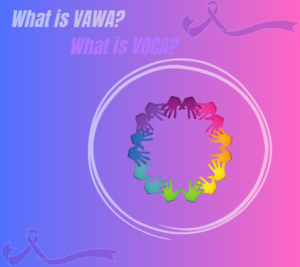
Introduction
Gender roles are socially constructed, and women are subordinate to men in all circumstances. Historically, men are the heads of the household while women are their wifely caregivers. For centuries, women did not obtain the basic rights they have today. Unfortunately, this causes toxicity to infiltrate the dynamic. Domestic violence is one example of how too much power on one person can destroy another.
The section above pertains to an underdeveloped social structure. Today, men and women are not the only genders recognized in American society. However, men, especially heterosexual white men, remain superior to any minority. The Violence Against Women Act (VAWA) was created for women, but now protects any victim of violence.
The History of VAWA
Domestic violence crimes were finally federally recognized in the United States. According to the Legal Momentum Organization, Congress passed the Violence Against Women Act (VAWA 1994) alongside the Violent Crime Control and Law Enforcement Act of 1994. The protections and provisions of the act were expanded in the Violence Against Women Act of 2000 (VAWA 2000), and the Violence Against Women and Department of Justice Reauthorization Act of 2005 (VAWA 2005).
VAWA 1994 was the first comprehensive federal legislation created to cease violence against women. It included provisions on rape and battering that focused on prevention and funding for victims; it validated women's groups that lobbied for federal protections in states lacking them. The bill was the first to make these crimes federally illegal and required every state to provide protection orders in full faith.
The drafting of VAWA began in 1990. President Joseph Biden (Senator of Deleware at the time) submitted a preliminary proposal highlighting the severity of violence against women to Congress. He collaborated with the Senate Judiciary Committee staff and the Legal Momentum (previously called NOW Legal Defense and Education Fund). As a result, experts and organizations worked together in the Task Force on VAWA to help draft and pass the bill. The Legal Momentum stated, "This initial coalition has become the very large and diverse National Task Force to End Sexual and Domestic Violence, which continues to collaborate to help draft and pass each VAWA reauthorization" (paragraph 3).
The Department of Justice founded the Office on Violence Against Women (OVW) which funded VAWA in 1994 and following legislation. OVW provided financial and technical aid to U.S. communities that created programs, policies, and practices aimed at ceasing domestic violence, dating violence, sexual assault, and stalking. In 2002, OVW became a permanent part of the Department of Justice. Since 1994, OVW granted approximately $4 billion to non-profit programs and state, tribal, and local governments. The American Recovery and Reinvestment Act (2009) included an additional $225 million for OVW funding.
- Funding for victim services and evidentiary matters
- Rape and battering that focuses on prevention
- Requires that every state afford full faith and credit to orders of protection
- Authorized domestic violence victims who escape and travel across state lines for custody orders without returning to jurisdictions
- Enhanced enforcement of protection orders across state and tribal lines
- Improved services for victims of stalking
- Increased access to services for communities of color, immigrant women, and tribal and Native communities
- Increased protections for immigrants, sexual assault survivors, and victims of dating violence
- Specifically included the needs of underserved populations
- VAWA 2005 founded new programs, such as Court Training and Improvements, Child Witness, and Culturally Specific programs
VAWA Today
The initial version of VAWA only supported women. However, the U.S. Department of Housing and Urban Development answered a frequently asked question about who is covered. It stated, "VAWA protects survivors, regardless of their sex, gender identity, or sexual orientation and regardless of the sex, gender identity or sexual orientation of the person who caused harm." Any "coercive behavior committed, enabled, or solicited to gain or maintain power and control over a victim" is covered under VAWA. Some examples are economic, emotional, mental, physical, sexual, and technological abuse and stalking.
VAWA has gone through several advancements since its original legislation. The most recent amendment of the bill was passed under President Biden's term in 2022. According to the National Network to End Domestic Violence (NNEDV), this reauthorization included groundbreaking provisions that were inclusive to any victim. One example was the creation of an LGBTQ+ services program. Another was restoring tribal jurisdiction. The NNEDV stated that this provision "allowed tribes to hold non-Native perpetrators accountable, improved existing housing protections and increased access to emergency and short-term housing, and created dedicated investments in culturally specific service providers to ensure survivors of color are supported" (paragraph 2).
VAWA & VOCA at Sylvia's Place
Additionally, VAWA and VOCA (The Victims of Crime Act) funds Sylvia's Place. According to Equal Justice USA, VOCA was established by Congress in 1984 under President Ronald Reagan and created the Crime Victims' Fund, which collects millions of dollars. The Crime Victims' Fund distributes a set amount annually that states must apply for; states re-grant the funds to nonprofit organizations. Sylvia's Place specifically uses funds from VAWA and VOCA for our six-bedroom emergency shelter, ten free counseling sessions, court accompaniments, legal advocacy, and transportation (company van or gas cards for clients).
Most Recent Annual Report (2022-2023)
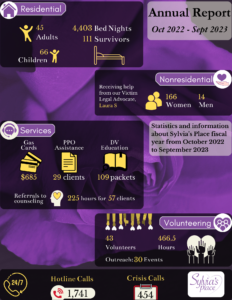
See More Annual Reports (2015+)
https://sylviasplace.com/strategic-change-plan/annual-reports/
References
What is financial abuse?
Financial abuse is when the abuser has control over the victim's money. This kind of abuse often occurs in physically and emotionally abusive relationships.
What is economic abuse?
Economic abuse is a broader concept of financial abuse. Abusers control a victim's ability to obtain and maintain resources; ultimately, the abuser threatens the victim's economic security and independence. It is more than abusing a victim and their money; abusers threaten and ruin something so vital like a victim's credit score.
Who is financially abused?
Definition
Child Financial Abuse is the misuse of a child's identity or assets for personal gain. It is often overshadowed by physical and emotional abuse causing it to be underreported. The impact is devastating on children's lives.
Three Common Forms
- Parental
- Teen Dating
- Identity theft
Parents have easy access to children's personal information and finances. Because of this, it is difficult to detect and resolve parental financial abuse. According to EndCan, this abuse is not malicious in every situation. Sometimes parents are in horrible financial situations, such as having a crappy credit score and piles of immense debt. Therefore, parents use children's clean slates to obtain loans, credit cards, or to make big purchases they could not before. Mostly, these bills are left unpaid and that is why it ruins a child's financial life before it fairly begins.
Many teenagers have their own income from working. Therefore, financial abuse can be an apparent issue when they date. According to EndCan, money management and dating are new experiences to teens; therefore it can be hard to understand what is healthy and unhealthy. Some indicators include: one partner must pay for all dates, one partner must ask permission to use their own money, one partner must give the other partner access to their money, and one partner is limited or not allowed to work. It is vital for parents to teach teens red flags of financial abuse and abuse in general.
Identity theft affects children 50 times more than other groups of people. Thieves do the same things as parents. They take out loans or get credit cards in the child's name and never pay off the debt. According to Dawson Place, "this form of abuse is the hardest to detect early on, but can be the most financially damaging" (2021).
Signs
- Child pays bills
- Child is punished for spending money
- Child receives mail about payments
- Child has a credit report
- Child has no access to their money
- Child is threatened with money
Impact
Most children do not know they have been financially abused until their adults. It will be extremely difficult to obtain huge accomplishments, such as buying a house or even renting an apartment because landlords look at credit scores. Also, the money still has to be paid to lenders; that is why it is vital to contact them, tell what happened, and work out payment arrangements or luckily get the debt completely cleared.
Definition
Like children, the elderly are extremely vulnerable to financial abuse. Psychiatrist.com uses the broad definition of financial abuse from the National Center for Elder Abuse. It is "the illegal or improper use of an elder’s funds, property, or assets including, but not limited to, misusing or stealing an older person’s money or possessions, coercing or deceiving an older person into signing any document (eg, contracts or will), and the improper use of conservatorship, guardianship, or power of attorney." The definition shows both sides of the abuse, fraud and exploitation.
Common Stories
The U.S. Department of Justice shares common stories of elder abuse. The first is exploitation by family, close friends, or neighbors (i.e. spousal fraud, identity theft by adult child, theft by guardian, misuse of a power of attorney, theft by friend and promised exchanges, etc). Secondly, exploitation by trusted professionals which involves investment fraud by financial advisor or tax preparers, forgery by caregivers, etc. Lastly, exploitation by strangers, including internet identity theft, fraud by “new sweetheart,” the "grandparent scam,” “home repair scam,” and “lottery scam.” The website goes in depth about the specific examples that may relate to you or someone you know.
Signs
- Sudden changes in bank accounts
- Additional authorized uses on credit card
- Unauthorized withdrawals from ATM
- Abrupt changes of will or related documents
- Unexplained missing funds and valuable items
- Unpaid bills despite having the available funds
Impact
According to psychiatrist.com "financial abuse of elders is underreported." Annually, $2.9 billion is lost from financial abuse. Many elders depend on fixed incomes from government assistance and/or retirement savings. This means the ability to live their independent routines are ruined when someone takes advantage. Financial abuse not only affects elders, but their families also. Family members may have to step in to take care of the victim and work to fix the issue. This can cause many burdens, but financially, families are paying more money in bills and basic necessities than before. Ultimately, victims result in nursing homes or hospitalization and die prematurely because of the abuse and potential neglect from family and caregivers. Mortality rates of victims of elder abuse are "comparable" to victims of caregiver neglect, which is the highest mortality rate of all types of abuse.
The National Library of Medicine states "Elder abuse (EA) affects one in six older adults, and financial EA, a common subtype, severely impacts victims and society. Again, there is limited of evidence because this type of abuse goes underreported. However, the National Library of Medicine conducted an experiment and went in great detail on their website. In result, "Financial abuse-only cases had the lowest prevalence of vulnerability and risk factors. Most of these factors, and a familial relationship, were significantly more common in cases involving other EA types. Findings indicate that financial abuse, occurring in isolation, is distinct from other EA types." According to the outcome of the experiment, the National Library of Medicine states financial abuse is a distinctive type of abuse and should be separated when documenting other EA types.
Description
According to the National Network to end Domestic Violence (NNEDV), financial exploitation is a common tactic abusers gain power and control in an intimate relationship. Research shows that it happens in 99% of domestic violence cases, and it decreases the chances of a victim's security after leaving the abuser. The abuse may be subtle or extensive, but the impact has the same affect on victims. Some tactics are concealing information, limiting the victim's access to assets, or reducing accessibility to family finances. Along with the other types of abuse, financial abuse, is committed to entrap the victim. Financial abuse can happen throughout the relationship or especially when the victim tries to escape. This type of abuse is considered the most powerful when trying to keep the victim in the toxic situation.
Signs
In some cases, financial abuse begins "very charming" but it is only to manipulate the victim. For example, the abuser may offer a weekly allowance so the victim can take a break from the stress of working. Victims get comfortable and begin trusting that the abuser loves them and merely wants to help. Ultimately, the allowance decreases sooner than later, and it is too late by the time victims want to gain back control over their finances.
In other cases, ones that are more overt, abusers will commit, but are not limited to, this list:
- manage all funds
- add debt to joint accounts
- hide assets
- withhold money
- not allow victim to access bank accounts
- refuse to contribute income
- forbid victim from working
- harass or stalk victim at their workplace
- force victim to file fraudulent tax returns
- force victim to write bad checks
- refuse to pay or evade child support
Impact
There are short- and long-term effects of financial abuse. In short-term situations, financial access is vital for the victim's safety. Without funds, survivors are often unable to afford safe housing; therefore, homelessness is a realistic fear they may have. After escaping a long-term situation, survivors have ruined credit scores, sporadic employment histories, and legal issues. This makes it difficult to gain back independence and security.
Need help?
Children: Unfortunately, children do not manage their money in these cases. They do not find out their credit scores are ruined until adult age. However, they can report and contact lenders when it’s time.
Elders: Visit www.justice.gov for my information and help. To report, call the National Elder Fraud Hotline 833-372-8311 / 10am-6pm EST/ Mon-Fri, and the National Adult Protective Services Association (NAPSA) https://www.napsa-now.org/help-in-your-area.
Victims in Intimate Relationships:
Six Quick Tips
- Contact local DV program
- Have copy of credit report
- Monitor credit regularly
- Open P.O. box for mail
- Call all companies with fin. info
- Change pins on all cards
For more quick resources on financial abuse visit www.nnedv.org (scroll to bottom of the page under the article).
If you or anyone you know has questions about things, such as more basic information, credit card information, what to do after the abuser takes money or runs up debt, information about finances when leaving an abusive relationship, and getting your money back along with other assistance, www.womenslaw.org has specific answers to specific questions under the tabs I mentioned.
References
(n.d.). About Financial Abuse. Nnedv.org. Retrieved October 16, 2024, from https://nnedv.org/content/about-financial-abuse/
(n.d.). Financial Abuse. Womenslaw.org. Retrieved October 16, 2024, from https://www.womenslaw.org/about-abuse/forms-abuse/financial-abuse#:~:text=Withholding%20money%2C%20stealing%20money%2C%20and,some%20examples%20of%20financial%20abuse.
Dominquez, S. F., Ozguler, B., Storey, J. E., & Rogers, M. (2022, April). Elder Abuse Vulnerability and Risk Factors: Is Financial Abuse Different From Other Subtypes? Pmc.Ncbi.nlm.nih.gov. Retrieved October 16, 2024, from https://pmc.ncbi.nlm.nih.gov/articles/PMC8966108/
Outreach Team (2021, November 4). What is Financial Child Abuse? Dawsonplace.org. Retrieved October 16, 2024, from https://www.dawsonplace.org/what-is-financial-child-abuse/#:~:text=Financial%20child%20abuse%20is%20the,information%20for%20some%20economic%20gain.
Singh, B. K., DO, Rustad, J. K., MD, McWilliams, G., MD, Gaston, E., MD, JD, Poole, S., LICSW, & Stern, T. A., MD (2023, June 13). Financial Abuse of Older Adults: Screening, Prevention, and Interventions by Primary Care Providers. Psychiatrist.com. Retrieved October 16, 2024, from https://www.psychiatrist.com/pcc/financial-abuse-older-adults-screening-prevention-interventions-primary-care-providers/
U.S. Department of Justice (n.d.). Financial Exploitation. Justice.gov. Retrieved October 16, 2024, from https://www.justice.gov/elderjustice/financial-exploitation-0
(n.d.). What is economic abuse? Survivingeconomicabuse.org. Retrieved October 16, 2024, from https://survivingeconomicabuse.org/what-is-economic-abuse/
What is Financial Child Abuse? Endcan.org. Retrieved October 16, 2024, from https://endcan.org/2021/10/21/3-forms-of-financial-child-abuse/
Introduction
Domestic violence and animal abuse intersect with one another more than you may know. This may be because animal abuse is historically separated from domestic abuse. Offenders can find countless ways to go through with the crime, either human or animal. This article will discuss them and more.
How are they linked?
Animals are beloved worldwide, especially pets, whether “a man’s best friend,” an emotionless emotional support cat, or even a greedy hamster. However, have you ever considered easily accessible wild animals, such as a woodchuck? Guess what? Hunting and harming animals can be linked to domestic violence. This is because the human victim is now more accessible than the wild victim.
Many people assume that animal abuse leads to human abuse. This is true for some cases; however, more offenders begin harming humans and then progress to animals. According to the FBI Law Enforcement Bulletin (LEB), one study showed that 16% of offenders began abusing animals before people.
Abusers get creative because they never want their “power” taken away. So what happens when they see even the slightest happiness radiate from their “prey?” Their blood boils like overflowing pasta water. They must destroy and conquer once again. Therefore, abusers will exploit a victim’s bond with their animal to continue manipulating, controlling, and punishing them.
What is considered animal abuse?
Again, abusers need to feel continuous control. They may buy the victim a pet, but take it away when angry. They may threaten, hurt, or kill the animal if the victim says they will leave. You may wonder, well how does that work? “It’s just an animal!” You may say. However, that is not the case and will never be. That “animal” is an animal, sure. However, the main thing is that it supports the victim. In Domestic Violence and Animal Welfare: The Science of Human-animal Interaction, Dolores Donovan shares how loneliness decreases when someone has a pet and sees it as a family, friend, or regular person. This is because the person projects human feelings, motives, and qualities on the animal, resulting in possible social support they would get from another person (Donovan 398). A lot of victims may have support from their families and friends but are too ashamed to tell them about their situation again or for the first time. Other victims may not have that worry at all. No problem is worse or better! Therefore, pets can be the sole support systems; they can’t talk back to you, but merely be there.
Physically harming the animal interferes with the victim psychologically because it can show what the abuser will do to them or remind them of when they were abused. Because of this, victims often remain in the violent relationship. According to LEB, 75% of women have reported their pets being abused by their offenders, with children witnessing 90% of the time. Moreover, studies have proved that 50% of all children are exposed to animal abuse. Nothing comes out of the blue! Therefore, these foul environments increase the risk of children becoming culprits. The LEB says it’s because they become desensitized and accepting of the abuse since it is familiar.
History and Laws Against Animal Cruelty
An animal at risk is a valid reason why a victim will stay with their abuser. Fortunately, many reports led to the Pet and Women Act (PAWS) in December 2018. According to LEB, the legislation provides housing assistance to domestic violence shelters. Also, victims have the will to protect their animals. This includes animals protected from interstate stalking, protection order violations, and restitution.
Also, the Preventing Animal Cruelty and Torture (PACT) Act protects animals from cruelty. Charlie Robinson and Victoria Clausen state that it is, “a federal law that prohibits the purposeful crushing, burning, drowning, suffocation, impalement, or other violent acts committed against animals, allowing the prosecution of crimes that affect interstate commerce or occur under federal jurisdictions” (Clausen, Robinson, 2021). The PACT Act is the first federal animal cruelty law to expand existing ones at the state level. The entire United States charges animal cruelty as a felony. However, penalties change from state to state. Most states only consider cats and dogs as pets, and others include birds, horses, and other animals. In 2016, “the FBI began tracking crimes against animals in the National Incident-Based Reporting System (NIBRS), in the same way it tracks other serious criminal offenses” (ALDF).
Before 2016, animal cruelty was a general crime in NIBRS. The data will help clarify who commits animal cruelty offenses, the most common animal cruelty jurisdictions, and associations with other crimes.
The Animal Legal Defense Fund (ALDF) provides several examples of how animal cruelty and human abuse are linked. In 1983, 88% of animal abuse was discovered during physical child abuse investigations. It is proved that children are most likely neglected and abused if they are cruel to animals. The Massachusetts Society for the Prevention of Cruelty to Animals and Northwestern University found that animal abusers are 5 times as likely to harm people in a 1997 study. Another experiment (2013) showed that 43% of school shooters also committed animal cruelty; the animals were mostly cats and dogs. In 2017, 89% of women reported their pets were threatened, harmed, or killed by their abusers. ALDF reports that “more than half of women in domestic violence shelters report that they delayed their escape out of fear for their animals.” These experiments prove how animal abuse is linked to human abuse, and how it can delay a victim’s escape from an abuser.
Want Quick Facts? Check out this Infographic!
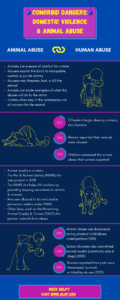
References
Donovan, D. (n.d.). Domestic Violence and Animal Welfare: The Science of Human-Animal Interaction. Pdf Document. Retrieved September 11, 2024, from file:///Users/arlanacamille/Downloads/DV%20and%20Animal%20Welfare%20-%20The%20Science%20of%20Human-Animal%20Interaction.pdf
Robinson, Charlie M.A, M.S., and Victoria Clausen M.A. “The Link Between Animal Cruelty and Human Violence.” Www.Leb.Fbi.Gov, 10 Aug. 2021, leb.fbi.gov/articles/featured-articles/the-link-between-animal-cruelty-and-human-violence. Accessed 11 Sept. 2024.
“The Link Between Animal Cruelty to Animals and Violence Toward Humans.” Www.Aldf.Org, aldf.org/article/the-link-between-cruelty-to-animals-and-violence-toward-humans-2/. Accessed 11 Sept. 2024.
This year marks the 54th anniversary since 1970, when the first Pride March was held in New York City. The queer community has steadily gained the rights it deserves through hardship. June is a month to reflect on and take pride in how far we have come, alongside those who belong to the queer community and those who have fought alongside and continue to support their rights. However, it is important to note that prejudice and mistreatment of the queer community still exist. It is up to queer people to come together to address this issue and continue moving forward every day to secure their rights and live their lives as they deserve.
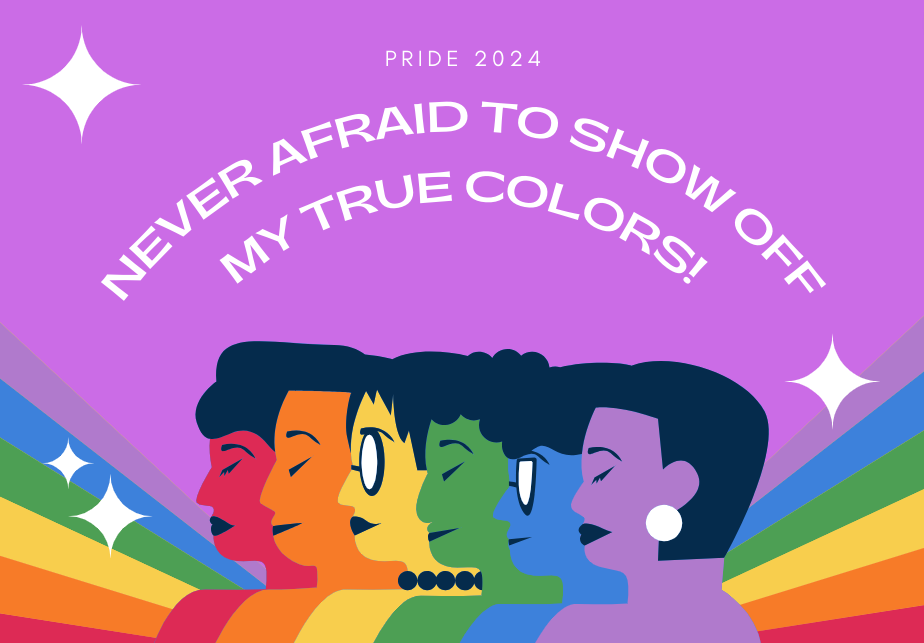
Here, I want to draw attention to those in the queer community who endure Intimate Partner Violence (IPV) daily without a voice. IPV and Domestic Violence (DV) occur not only among heterosexual couples but also among gay, lesbian, bisexual, and transgender couples. Statistics show that in some cases, these forms of violence occur at even higher rates than among heterosexual couples. The reality is that they face a lot of stigma and prejudice, making it challenging for them to access the support they need.
Lesbian and Bisexual women are more likely than Heterosexual women to have experienced IPV in their lifetime
The CDC’s National Intimate Partner and Sexual Violence Survey (NISVS) shows that women (32.9%) are more likely than men (28.1%) to have been victims of partner violence in the past. Within the same statistics, among the queer community, 56% of bisexual women reported experiencing partner violence. Compared to heterosexual women, bisexual women are 1.8 times more likely to experience partner violence. Additionally, 40.4% of lesbian women have been victims of IPV, which is approximately 8% higher than among heterosexual women.
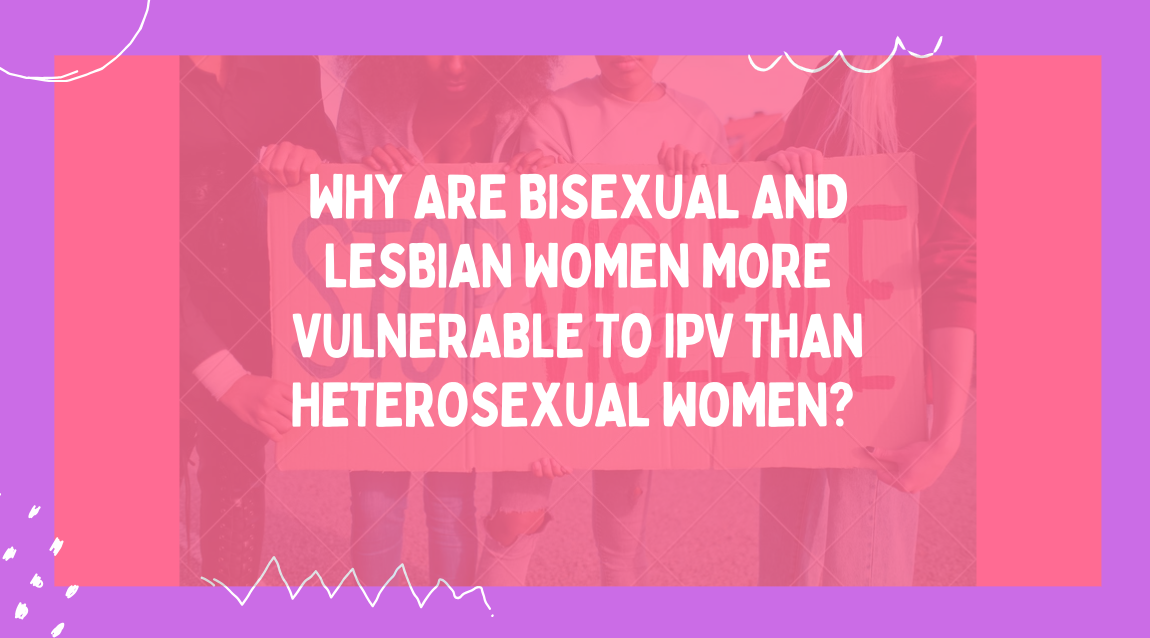
First, there is the issue of silence and prejudice against violence within the queer community. Historically, fear of speaking out against violence has been prevalent among sexual minorities. Not only are queer communities socially marginalized, but they also face various prejudices that hinder speaking out, stemming from fears of exposure regarding their sexuality and doubts about receiving support if they do come forward. For queer women, this challenge is compounded by dual prejudices of misogyny and homophobia when reporting victimization. Additionally, bisexual women may encounter biphobic prejudice within the queer community.
Secondly, traditional feminist views that emphasize masculinity versus femininity can deter queer women from reporting violence. This is due to the stereotype that men are typically perpetrators of IPV and the misconception that women, perceived as physically weaker, do not inflict harm. There is a widespread misunderstanding that IPV is not inherently tied to gender but rather to power dynamics and control within relationships. Regrettably, there is also resistance within feminist circles to actively discuss lesbian IPV, as it may challenge prevailing notions of misogyny and patriarchy-driven abuse typically attributed to men (which could disrupt the woman-versus-man paradigm).
Third, there is a lack of awareness, education, and support services specifically tailored to address IPV within the queer community. Many victims hesitate to leave their abusers because they, along with those around them, perceive IPV as primarily a problem in heterosexual relationships and lack access to support resources that cater to sexual minorities. Many shelters are ill-equipped to assist sexual minority women, leading lesbian and bisexual women to often avoid seeking refuge there. A study by Balsam (2001) revealed that over 60% of lesbian women who were victims of IPV did not leave their partners or seek help from women’s shelters.
Furthermore, the high prevalence of HIV in the queer community exacerbates the situation. HIV-positive IPV victims fear dying alone if they leave their partners, while those with HIV-positive IPV partners feel unable to abandon their sick loved ones. Some victims contract HIV through sexual violence, such as demands for unprotected sex from their partners. Thus, IPV within the queer community carries similar risks as in the heterosexual community, yet specific factors within the queer community suppress victims’ voices in addressing IPV.
What kind of abusive behaviors are included in queer couple?
IPV is abuse or aggression by romantic/sexual partners. Essentially, the same abuses can occur in sexual minority couples as in heterosexual couples. However, queer communities have experienced social stigmas, leading to different manifestations of IPV. There are several specific types of abusive behaviors in IPV among queer couples, including emotional, physical, and sexual abuse, similar to those seen in heterosexual couples.
Please review the following examples:
- Pressuring or threatening a partner to come out or remain closeted
- Saying a partner’s LGBTQ identities are insufficient or excessive
- Denying that IPV exists in queer communities
- Turning mutual friends against a partner
- Physically targeting a partner’s genitals or chest in violence
- Cutting off a partner’s access to hormones
- Denying sexual protections because LGBTQ sex is considered safer
- Isolating a partner using homophobia
These are just a few examples of IPV by abusive partners. If you have experienced similar behaviors from your partner, please talk to your friends, family, or seek support from relevant organizations. You are not alone, and you deserve support and understanding.
Places You Can Consult
Sylvia’s Place 269-673-8700
Youth Support including LGBTQ+ : Ozone House (734) 662-2222
Transgender Support : Transgender Michigan
Shelters/ Safe housing service for LGBTQ+ : Ruth Ellis Center
Immediate Help : Equality Michigan 313-537-7000
Reference
Library of Congress. Lesbian, Gay, Bisexual, Transgender and Queer Pride Month. https://www.loc.gov/lgbt-pride-month/about/
Taylor N.T. Brown and Jody L. Herman(2015). Intimate Partner Violence and Sexual Abuse Among LGBT People. A review of existing research. https://williamsinstitute.law.ucla.edu/publications/ipv-sex-abuse-lgbt-people/
Rollè L, Giardina G, Caldarera AM, Gerino E, Brustia P(2018). When Intimate Partner Violence Meets Same Sex Couples: A Review of Same Sex Intimate Partner Violence. Front Psychol. 21https://www.ncbi.nlm.nih.gov/pmc/articles/PMC6113571/
National LGBT Health Education Center. Recognizing and Addressing Intimate Partner Violence in Relationships of LGBTQ People:A PRIMER FOR HEALTH CENTERS. https://www.lgbtqiahealtheducation.org/wp-content/uploads/2020/04/TFIR-158_Intimate-Partner-Violence-Brief_web_spreads.pdf
HRC Foundation(2022). Understanding Intimate Partner Violence in the LGBTQ+ Community. https://www.hrc.org/resources/understanding-intimate-partner-violence-in-the-lgbtq-community
Balsam K. F. (2001). Nowhere to hide: lesbian battering, homophobia, and minority stress. https://www.taylorfrancis.com/chapters/edit/10.4324/9781315808987-3/nowhere-hide-kimberly-balsam
May is the mental health awareness month! We need to focus on our mental health and increase awareness of how important it is. Mental health is an important part of our lives, however, there is still a stigma associated with mental health and it is looked over compared to physical health. Let’s take a deep breath here, and put our eyes on the mental well-being of ourselves, our families, and our loved ones.
Emotional and psychological abuses are more common in IPV
When you hear the words “intimate partner violence” or “domestic violence,” what immediately comes to mind is physical abuse or sexual assault. In reality, however, in cases of “intimate partner violence,” emotional and psychological abuse is more common and occurs more often than physical abuse. For example, research among North Carolina women (Smith et al., 2002) found that 18.4% of women experienced at least one form of intimate partner abuse. However, of those who experienced some form of abuse, only 1.9% experienced only physical assault, and only 1.1% experienced only sexual assault. In other words, it is not an exaggeration to say that emotional and psychological abuse is more prevalent than physical abuse and occurs more frequently than physical abuse.
What is emotional and psychological abuse?
There is no significant difference between them. It is just said that psychological abuse is a narrower definition than emotional abuse and psychological abuses include manipulative control behavior to the victims. Please look at an example of emotional and psychological abuse.
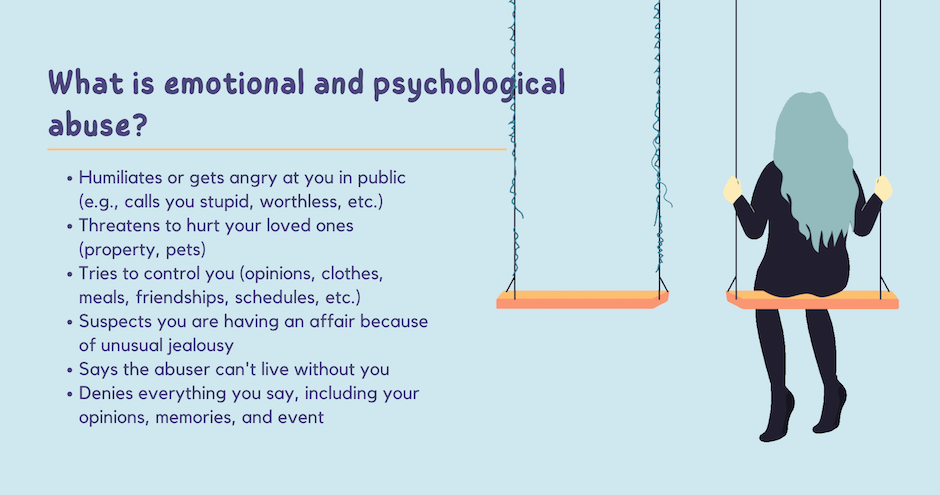
How does it destroy your mental health?
Survivors often internalize their partner’s verbal abuse. Even if they initially question their partner’s words and actions, as they continue to be verbally abused on a daily basis, they come to believe what their partner is saying. They then internalize the self-denial from others, believing that wrong ideas such as “I am stupid and worthless”. Even after they realize that this was emotional and mental abuse, they blame themselves for their situation and feel anger toward themselves. According to an article by American Phychiatiric Association, approximately 20% of IPV survivors have major depressive disorder (MDD), generalized anxiety disorder (GAD), and posttraumatic stress disorder (PTSD).
What are the initial signs we can notice?
Emotional and psychological abuse is often difficult to recognize, especially in the early stages. If there is violent behavior from the beginning, it is not difficult to avoid, but in many cases, there is no particular problem initially. A partner who was kind to you at first may gradually begin to say and do things to mentally control you. Once under the abuser’s control, many victims find it difficult or impossible to get out of the situation. That is why it is important to recognize disturbing signs in the early stages.A person who inflicts emotional or physical abuse on a partner may show the following signs early in the relationship.
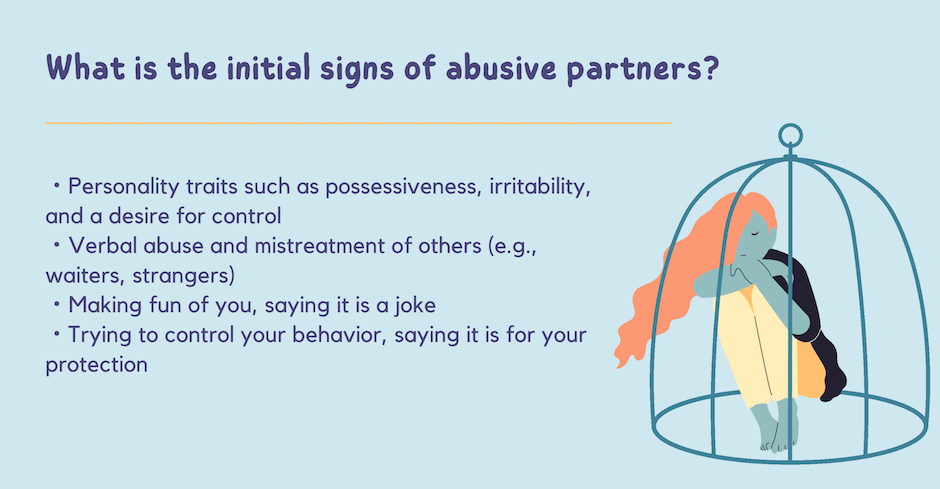
These are just a few examples. Emotional and psychological abuse can permeate your relationship with your partner and is difficult to recognize. If you have experienced this form of abuse, do not blame yourself. The abuse is not your fault. Even if your family or friends tell you that you are allowing yourself to be abused, the abuse is not your fault; it is the fault of the abuser. If you are being abused by a partner or family member, it is essential that you seek help and support to end the emotionally or psychologically abusive relationship.
Places Where You Can Consult
Sylvia’s Place 269-673-8700
the U.S. National Domestic Violence Hotline 1-800-799-7233
Michigan’s Domestic Violence Hotline (free and confidential resource for victims to call, text or chat) 1-866-VOICEDV
Reference
Lifespan (2024). The Importance of Mental Health Awareness Month. https://www.lifespan.org/lifespan-living/importance-mental-health-awareness-month
Women’s law.org (2021). Emotional and Psychological Abuse. https://www.womenslaw.org/about-abuse/forms-abuse/emotional-and-psychological-abuse
Mechanic MB, Weaver TL, Resick PA. Mental health consequences of intimate partner abuse: a multidimensional assessment of four different forms of abuse. Violence Against Women. 2008 Jun;14(6):634-54. doi: 10.1177/1077801208319283. PMID: 18535306; PMCID: PMC2967430. https://www.ncbi.nlm.nih.gov/pmc/articles/PMC2967430/
Mayumi Okuda Benavides, M.D., Obianuju O. Berry, M.D., M.P.H., Molly Mangus(2019). Intimate Partner Violence A Guide for Psychiatrists Treating IPVSurvivors. American Phychiatry Association. https://www.psychiatry.org/psychiatrists/diversity/education/intimate-partner-violence
Michigan’s Domestic Violence Hotline. https://www.michigan.gov/mdhhs/safety-injury-prev/publicsafety/crimevictims/assistance/domestic-violence-hotline
Putting It Off Makes It More Apparent: LGBTQ+ Domestic Violence
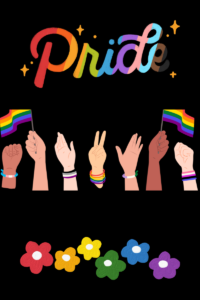
June is pride month for the Lesbian, Gay, Bisexual, Transgender, and Queer (LGBTQ+) community in America. Joint Base Andrews states, "The federal government first recognized the month in 1999 when President Bill Clinton declared June 'Gay & Lesbian Pride Month.' In 2009, President Barack Obama declared June LGBT Pride Month. On 1 June 2021, President Joe Biden declared June LGBTQ Pride Month" (2023). These statements prove evolution for the community. However, severe issues, such as domestic violence is historically disregarded by society, state, and federal government.
Statistics
According to the National Coalition Against Domestic Violence Organization (NCADV), people in the LGBTQ+ community are mostly excluded from the domestic violence movement. This is because society, state, and federal government traditionally focused more on heterosexual relationships (2018). Statistics are tricky because a lot of cases are not reported. However, in 2018, the NCADV disclosed equal to greater percentages of LGBTQ+ members falling victim to domestic violence compared to heterosexual couples (2018).
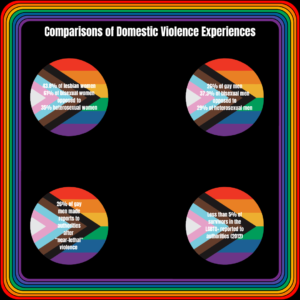
Many forms of abuse are apparent in the statistics above. Violence is not limited to being sexually and physically abused; threats, insults, and stalking also fall into the category. Moreover, it is vital to mention that the LGBTQ+ community is a broad spectrum. This prior research may be outdated, but it is necessary to share. It showcases the need for more awareness. More stories need to be shared! More aid needs to be given!
Intersectionality and intersectional identities are within the LGBTQ+ community. Therefore, outside of being queer, Asians, Black and African Americans, Indigenous Persons, Latinos, and any other group that does not fit into the set standard, bear the inequity of more oppression. Black and African American victims are more prone to physical violence than other races and ethnicities. Transgender victims are more likely to be abused publicly as opposed to non-transgender persons. Bisexual victims are more likely to be sexually abused than non-bisexuals. Additionally, white victims are inclined to be sexually abused more than others in the community who do not identify as white. These statistics are real examples, but should not be limited to others that are not reported.
Treacherous Obstacles to Receive Help
The NCADV and the Women Advocates organization discuss several barriers the LGBTQ+ community experiences when seeking help. To reiterate, domestic violence is heavily portrayed as only a heterosexual problem. Homophobia, transphobia, and queerphobia are still apparent because they are minorities. Some fear they will be judged and mocked by service providers and non-LGBTQ+ domestic violence victims. "Will I be outed?" is a troubling concern. Some believe spreading awareness may detract from the community's societal progress. Lastly, being judged and hated for merely being who they are can diminish their confidence.
Federal and State Action
In 1994, the Violence Against Women Act (VAWA) was passed to protect women from domestic violence; however, the federal government amended the act for LGBTQ+ victims (Samons, 2013). In 2013, VAWA was reauthorized for the third time, and made "major" advances to protect heterosexual and same-sex relationships, transgender people, illegal immigrants, and Native American women (Samons, 2013). Christina Samons explicitly provides examples from the act in "Same-Sex Domestic Violence: The Need for Affirmative Legal Protections at all Levels of Government. The original version of the act was vague and left room to exclude the community. Fortunately, President Barack Obama and his administration released an "official opinion" that broadly included everyone in 2010. The reauthorization debate was set in 2012 without progress until the next year.
The federal government made vital changes, but crime will not decrease if the state government does not follow suit. We can see the differences in application or requirements across different states. Generally, states protect families and criminal law statutes from domestic violence, and victims must fit the requirements to obtain a protection order (PPO). California and Hawaii are examples of inclusivity in the state. A person does not need to press charges for a protection order in California. Domestic violence statutes in Hawaii protect LGBTQ+ victims. However, minors (anyone under the age of 18) can only obtain a protection order if a family member or guardian applies for them.
In contrast to these more inclusive and progressive measures, Samons provides information about New York. Same-sex domestic violence is not a crime if the people involved are not family members despite having the largest population of same-sex couples almost 24 years ago. Samons states, "According to the New York Family Court Act of 2002, a domestic violence victim could petition for a protective order for crimes like assault and harassment" (Samons, 2013). The act benefited some same-sex relationships, but the violence had to fit under the umbrella; there were too many limitations.
Summary
- Domestic violence does not only affect heterosexual relationships.
- LGBTQ+ members are more likely to fall victim to domestic violence than heterosexual persons.
- The LGBTQ+ community has a broad spectrum, and statistics do not show that.
- The LGBTQ+ community is a minority and has subminorities.
- The LGBTQ+ community has many barriers when seeking and receiving aid.
- The federal government has acted more than the state government. Crime will not decrease because of it.
References
Strengthen Understanding and Support for Survivors
April is Sexual Assault Awareness Month, and April 21-27 was National Crime Victims’ Rights Week (NCVRW). Every year in April, we celebrate this week to increase understanding about victimization and how crime affects survivors, their families, loved ones, friends, and communities. At Sylvia’s Place, we especially focus on supporting survivors of sexual assaults and intimate partner violence.
This year’s theme was ‘Building Connected Communities.‘ Survivors of sexual violence are subjected to various forms of victim blaming by society and experience stigma as victims on a daily basis. To gradually reduce this structure of victim blaming, it is important for the community as a whole to better understand and support survivors of sexual assault.
More than half of DV incidents are not reported
In 2022, according to the National Crime Victimization Survey (NCVS), there were 951,930 intimate partner violence victimizations and 1,370,440 domestic violence victimizations, with nearly half of them not reported to police.
In Michigan alone, according to the Michigan State Police’s Incident Crime Report, 64,545 people have been victims of domestic violence, and members of LGBTQ+ communities face equal or higher risks of intimate partner violence compared to heterosexuals. Unfortunately, society remains unsafe, and those closest to us may be harmed.
How do we talk and provide support to survivors?
How should you respond if a friend, family member, or loved one who is important to you has been victimized and confides in you?
1. Acknowledgement and Empathy
It takes a lot of courage to open up about your experience of sexual victimization or intimate violence. The first thing to do is to thank them for sharing their experience. Then, it is important to show empathy by “acknowledging” their experience, not denying it, and showing empathy by saying,
“Thank you for sharing your painful experience with me. I’m sorry this happened to you. I’m sorry it had come to this.”
2. Providing Support
Communicating that you are always willing to listen can provide victims with a sense of security. The mere act of listening can be a great support, as it reminds victims that when they remember painful experiences, they have someone close at hand whom they can talk to. You can say,
” if you ever need to talk, I’m always here to listen and I care about you. Never feel alone.”
3. Believe the Victim’s Story
Eight out of ten perpetrators of sexual assault are people known to the victim or someone the victim knows, and 33% of sexual assaults are committed by a current or past intimate partner. Therefore, victims are constantly exposed to their own inner voice and public accusations that they may have been wronged. That is why it is so important to acknowledge the victim’s story and believe them.
“I believe you. You are not at fault, and what happened to you is absolutely unforgivable.”
Not being sure what to say to them is what happens when you don’t want to hurt your loved ones any more than they already are. Even if you are not able to say the perfect words, do not blame yourself. Often, family and friends who support the victim can also be under a lot of emotional strain during the support process. It is important that you offer as much support as you can and guide the victim to seek professional help.
Places Where You Can Consult
Sylvia’s Place 269-673-8700
Michigan Advocacy Program (734) 665-6181
Statewide Domestic Violence Hotline 1-866-864-2338
Michigan Domestic Violence Hotline 1-866-864-2338
the National Sexual Assault Hotline 1-800-656-HOPE
Outcenter in Michgan (Free counseling for supporting transgender, gender fluid, or gendernon-conforming folx) 1-269-815-0185
Reference
Victim Support Services (2024).What is National Crime Victims’ Rights Week. https://victimsupportservices.org/events/national-crime-victims-rights-week/
Bureau of Justice Statistics (2023), Criminal Victimization, 2022, NCJ 307089, BJS. https://bjs.ojp.gov/library/publications/criminal-victimization-2022
Ken Coleman (2024). Nessel says Michigan remains committed to supporting sexual violence survivors. Michigan Advance. https://michiganadvance.com/2024/03/25/nessel-says-michigan-remains-committed-to-supporting-sexual-violence-survivors/
RAINN (2024). Tips for Talking with Survivors of Sexual Assault. https://www.rainn.org/articles/tips-talking-survivors-sexual-assault#:~:text=Remind%20the%20survivor%2C%20maybe%20even,they%20are%20comfortable%20sharing%20it.
RAINN (2024).Perpetrators of Sexual Violence: Statistics. https://www.rainn.org/statistics/perpetrators-sexual-violence
A Love Like That
Teen Dating Violence (TDV) is a form of intimate-partner violence. The victim is a teenager, with the abuser most likely to be a teen as well. The violence can include but is not limited to physical, sexual, emotional, psychological, or stalking.
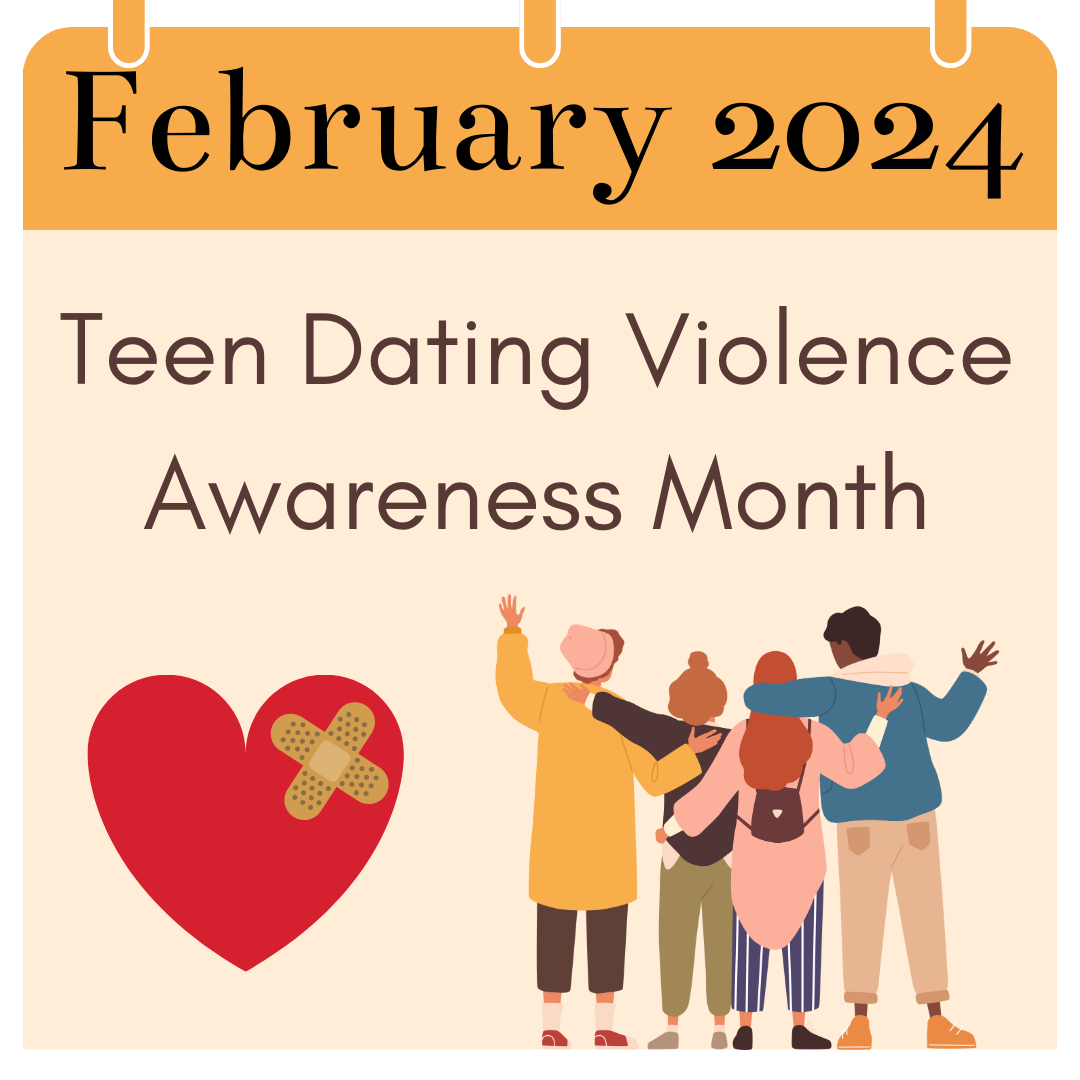
What is "That"?
Relationships are hard to define at the best times. Sometimes you are unsure of how to classify the feelings between you and another. In this article, dating will be defined as an intimate relationship between two or more people. This may come in the form of—but not limited to—sexual, emotional, physical, or mental attraction. The relationship may be gay or straight, non-monogamous or monogamous, casual or serious.
A Healthy Relationship can include:
- Mutual respect and interest
- Feeling open and safe to talk to your partner(s), particularly about difficult topics
- Being honest with your partner(s), without the fear of retaliation or harm
- Equal say in decisions, with compromise when necessary
- Establishing boundaries, respecting them and feeling respected
- Having relationships, friends and family, outside of your partner(s)
- Practicing consent
No two relationships look the same, not even within polyamorous couples. However, every healthy relationship is built from the foundation of honesty, communication, respect, equality, and consent.
An Unhealthy Relationship can include:
- Your partner(s) disrespects, distrusts, and disregards you
- Fear of retaliation or harm
- Your partner(s) always having the final say despite your wishes
- Your partner(s) humiliate you, particularly in public or online
- Your partner(s) do not communicate their feelings
- Your partner(s) prevent you from having social connections outside of them
Abusive relationships are born out of unhealthy ones. Some actions can include mistreatment, accusations of cheating when there is none, isolating partner(s) completely from social connections, and enacting violence onto their partner(s). There is not a fine line to determine when a relationship becomes abusive. Regardless, abusive actions should never be tolerated or seen as normal. Everyone deserves a relationship free from violence and fear.
If you or a loved one believes that they are in an abusive relationship, please reach out to our phone number 269-673-8700
You must also take time to check in with yourself. You have a relationship between your body and mind. To take care of one begets the care of another.
When was the last time you did something for yourself? Big or small. These actions of caring for yourself fosters love within yourself. A healthy body, mind, and attitude makes a healthy person.
Take some time today to practice self-care
- Wear your favorite clothes
- Take a spa day to treat yourself
- Drink your favorite tea, coffee, etc and think about why you like that flavor
- Journal what ever is on your mind
- Take a walk outside and breathe in a deep breath
Anything that makes you feel relaxed or energized! You deserve a love like that!
Teens are an emotionally vulnerable population due to their developing brains, growing societal responsibilities, and naturally curious ventures into "adult" practices. In the practice of osmosis, they model what they have learned from adults and their peers. This modeling can be a double-edged sword, as without the proper education to inform them of safe practices versus non-safe, teens can engage in mean, dangerous, and even abusive behavior
In this digital age, information is click of button away. Feeds overloading the sense. News filling the ear. Connections and interactions--unmonitored and unfiltered--occur between the whole world. It is now, more than ever, to help teenagers learn what is a healthy relationship vs an unhealthy one, how to establish boundaries, and how to navigate the difficult world of adult relationships.
Consent:
Consent is key to a healthy relationship. More often, people bring up "consent" in a relationship when talking about physical intimacy (kissing, sex, etc). However, consent is practiced everywhere. When you are asking to enter into another person's personal life, personal space, knowledge of their thoughts or feelings. When you ask "can I?", you are asking for consent to proceed.
Planned Parenthood made a handy little acronym to remember how to practice consent: FRIES
F: Freely Given
The person being asked must freely give consent. This should be done without pressure, manipulation, or under the influence of drugs or alcohol. The person should consider if they truly want to proceed. It is always a choice.
The person(s) asking should remember the importance of accepting a 'no'.
R: Reversible
Anyone can change their mind at any time. It does not matter if they said "yes" at first, have done it before, or were just 'getting to the good part'. The consent can be revoked. The person(s) asking should accept the change. Pressuring them into reconsidering or saying "but we already started" or "you already said yes" is makes the answer no longer freely given, thus making it NOT consent.
I: Informed
Consent needs information. In regards to sex, a partner not disclosing any STDs, birth control, or condom use is not informed. Being open and honest with one another creates the best way to make the best decision. Sharing information can be scary, but being informed is being safe!
E: Enthusiastic
No one wants to do something that they don't enjoy. Doing something out of obligation does not make it fun.
S: Specific
It should be clear what you're doing. There's nothing wrong with going will the flow. However, when a big step is about to be taken, then asking "may I xxx?" gives a specific answer to a specific action. Someone saying 'yes' to kissing does not mean that they are saying 'yes' to sex.
Also, it does not matter if they said gave consent in the past for the same action. Consent is about the here-and-now.
Boundaries:
Boundaries can be a bit scary. The word evokes a definite separation that can feel like putting an insurmountable barrier of crosswire and hatch between two things. Countries' boundaries are engraved, artificially crafted lines that inform ownership on either side. Boundaries in sports inform the designated area where the game can be played, with a loud whistle blown the second its crossed. In older video games, boundaries can be invisible walls that you didn't know where there until your character slams into an invisible space.
These types of boundaries create an idea of immovable, invisible, and uninformed barriers that you have to know immediately or face immediate repercussions. The sticky truth is that boundaries are amorphous, shifting between needs and wants of the individual; are learned, sometimes you do not know you have a boundary until it is crossed; and practiced, constantly enforced until they become second nature.
Boundaries are not always a big line in the sand. More often than not, they can be small actions or words or thoughts that communicate your needs. For example, you have a special pen that you like. You always use this pen. One day, your partner uses this pen without asking first. It makes you feel upset because they used your pen without asking and you feel like they mistreated your special pen.
Maybe you didn't tell them not to use this pen before. Maybe it never crossed your mind to tell them. Maybe they were a bit thoughtless in not asking. Maybe they did or didn't know it was your favorite pen. These are all factors that can inform the situation, but your feelings still exist. In some capacity, you feel like a boundary was crossed by not asking for permission to use a very special item.
The pen example may seem small, but it a drop in the macrocosmic relationship. Ultimately, you can find mediation between this event. You can explain why you felt upset. Your partner can apologize, and explain their side. You can come to a resolution and understanding. The boundary may have been crossed, but it can be remedied.
However, the issue of respecting the boundaries comes where your partner keeps using your pen after talking to them. They aren't respecting the request you made. Maybe in addition, they then use your blanket, or food, or car, or phone. The crossing of boundaries escalates and the disrespect increases. This is now unhealthy into abusive behavior.
Stats Like That
15% of teenage romantic relationships start online.
Tienda, Goldberg and Westreich found that most teenage relationships are in-person, and are with people that the teen meets at school (2022). However, the nuance of this fact says that teens who felt more comfortable or 'fit in' at school were more likely to create in-person romantic relationships than their 'less-sociable' peers. Also, the study found a gendered aspect in that less sociably-comfortable girls were more likely to initiate online relationships.
This does not discount social media as an important tool for initiating or maintaining relationships, however. Internet and social media was the second-most used way to initiate and maintain friends and partners (Tienda, Goldberg and Westreich 2022). Furthermore, teen are more likely to express romantic intentions by interacting the person's social media (e.g. Facebook-friending, liking or commenting posts, DMing) (Pew Research 2015).
The concept of social media apps as a whole must be acknowledged. Avenues of connection have only broadened with social media apps--Instagram, Facebook, Twitter, Discord, Snapchat, Telegram, and more. A significant part of their lives are on social media. In a 2020 Pew Research Center article, 70% of respondents between the ages of 18-29 say that they use social media to check up on someone they used to date/be together with, and 48% of that age bracket say that they use social media to share or discuss their current relationship or dating life. Also, younger American adults were more likely to use social media as a way to express how important their relationships are and were more likely to feel insecure or jealous about their partner's social media use.
It is not a reach to extrapolate that data to say that teenagers with access to these apps would participate in these behaviors. In a 2022 study by the Mayo Clinic, 35% of teens use at least one of five social media apps (YT, TikTok, FB, IG, or SC) multiple times a day.
50% of teenagers report harassment and stalking
Stalking is dangerous. As we discussed in January (National Stalking Awareness Month), 1 in 3 women and 1 in 6 men have been victims of stalking in their lifetime. While the literature is limited, studies show that adolescents are more likely to be stalked than adults (SPARC 2022). Being stalked or experiencing dating violence leads adolescents to withdraw from activities that they previously found pleasurable to avoid contact with a stalker. This limits their social connections, support, and people to talk to.
65% of teenagers report psychological abuse
In one nationally representative study of young people ages 14 to 21, 51% of females and 43% of males reported being victims of at least one type of dating violence, while 50% of females and 35% of males reported perpetrating at least one type (Ybarra 2016).
Lenhard, A., Anderson, M., Smith, A. (2015). Teens, Technology, and Romantic Relationships. Pew Research Center. https://www.pewresearch.org/internet/2015/10/01/teens-technology-and-romantic-relationships/
Mayo Clinic Staff. (2024) Teens and social media use: What's the Impact?. Mayo Clinic. https://www.mayoclinic.org/healthy-lifestyle/tween-and-teen-health/in-depth/teens-and-social-media-use/art20474437
Tienda, M., Goldberg, R. E., Westreich, J. R. (2022). Adolescents' Partner Search in the Digital Age: Correlates and Characteristics of Relationships Initiated Online. Journal of youth and adolescence, 51(3), 393–408. https://doi.org/10.1007/s10964-021-01557-2
Vogels, E., Anderson, Monica (2020). Dating and Relationships in the Digital Age. Pew Research Center. https://www.pewresearch.org/internet/2020/05/08/dating-and-relationships-in-the-digital-age/
Ybarra, M. (2016) Lifetime Prevalence Rates and Overlap of Physical, Psychological, and Sexual Dating Abuse Perpetration and Victimization in a National Sample of Youth. Arch Sex Behav 45, 1083–1099. https://link.springer.com/article/10.1007/s10508-016-0748-9
1 in 10 high school students
have experienced physical violence from their dating partner in the last year
1 in 10 high school students
have experienced sexual violence form their dating partner in the last year
The cycle of abuse starts at a young age. 1 in 5 women and 1 in 7 men who experienced rape, physical violence, and stalking by an intimate partner first experienced some form of partner violence between 11 and 17 years of age.
Adolescents who experienced dating violence were more likely to experience symptoms of depression and anxiety; be more withdrawn and antisocial; and engage in unhealthy behaviors (e.g. drug, alcohol, or tobacco use); and suicidal ideation.
Adolescents who experience safe teen dating and have positive peer relationships are more likely to experience improved school performance; improved interpersonal skills (e.g. communication, negotiation, and empathy); positive self image and reduced unhealthy behaviors (e.g. drug use, anti-socialness).
from the CDC's Fast Facts about Preventing Teen Dating Violence and LoveIsRespect's 2024 TDVAM Action Guide
It is may be difficult, but teens best benefit from open communication themselves. It is critical for the adolescents and teens to learn how to build and maintain healthy relationships. While it is human nature to meet and talk to people, it takes skills to make healthy relationships. Here are some ways to build the skills for teens:
Teach: What is a healthy relationship? Does the teen have healthy relationship role models to look to? What do they know?
Talk: Studies show that teens respond better to open communication. They want to know the 'why' of rules rather than hearing 'because I said so'. Clear expectations give teens tangible results to which they compare their actions or relationships. Saying 'I don't like you dating XXX because I see you withdrawing from your friends' gives the teen an idea of what is right and wrong in a relationship.
Empower: Trust in what they know. Teens know their situation very well. Remind them to listen to their inner voice instead of outside pressures. When they say something, support what they are feeling. They might not have the words to explain what they are feeling or the experience to know what to do. That's why they need someone on their side to support them when they make a decision, and someone to help pick them up when the decision was wrong.
Empathetic: Teens won't always make the best decisions. They are still learning, they are always human. Remembering to be empathetic to their mistakes and guide them to better practices rather than punishing them can foster a safe relationships. This is a practice of 'harm reduction' rather than 'zero tolerance'.

Know It. Name It. Stop It.


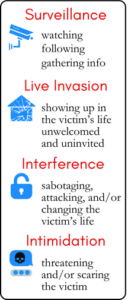
Fig.2: SLII Strategies
Stalking is an attributable behavior. Ringing a doorbell or sending flowers isn’t illegal or stalking, but done with the purpose, directed at a specific person, which causes a reasonable person to feel fear, is stalking.
Behaviors and actions taken by stalkers typically fall into 4 categories. Most stalking overlap and occur concurrently. These tactics are called the "SLII Strategies": surveillance, live invasion, interference, and intimidation. Examples of these tactics can be seen in Fig.2.
Victims of stalkers are unlikely to actually use the word “stalk”. They describe the behavior as “scary” or leaves them feeling “afraid” or “threatened”. Listen for these behaviors!

As stated in The National Intimate Partner and Sexual Violence survey (Smith, Basile, Kresnow 2022), nearly 1 in 3 women and 1 in 6 men (Fig.2) reported stalking victimization at some point in their life. Furthermore, 1 in 15 women and 1 in 24 men reported stalking in the past twelve months at the time of the survey.
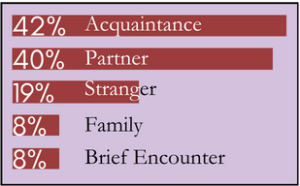
Fig.3
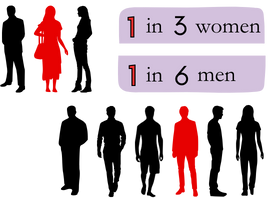
Fig.2
Across the board, women are more likely to be stalked. Men are more likely to be stalkers, regardless of the gender of the victim. Another misconception is that the stalker is a stranger, following the victim from afar. Rather, between 40% to 45% of stalkers are acquaintances or current/former partners (Fig.3).
This is true for male and female victims.

It is not your fault as a victim, nor as a bystander. It is the stalker who must take accountability for their actions against another. This does not mean that the victim, nor bystander is helpless to the whims of the stalker.
The bystander effect is real, and should not be overshadowed in the discussion of how to stop stalking.
Don’t Downplay or Minimize
Documentation!
Learn more about Stalking Awareness.

What do Survivors Say? - The Loud Silence of the Clothesline Project
Domestic Violence is often referred to as a 'hidden crisis'. The intimate nature of the crime shrouds the act of it in layers of access. One cannot tell from the outside when a victim is suffering. Furthermore, victims often have their power and control taken away from them. They are screaming, but no sound escapes.
A victim finds the strength to take the first step out of the situation. They make a call or look up a shelter that could help. That is how they often find Sylvia's Place. We are here as a first-order resource for those escaping intimate-partner violence.
After walking through our housing and resource process, while have a safe place to rebuild their lives, victims leave Sylvia's Place as survivors, ready for the next step in their life. Now, they have taken back control for themselves.
It is in this moment, we ask the survivors if they would like to write on a shirt for the Clothesline Project. By marking their words on a shirt, survivors have the chance to excise their demons, reclaim their voice, and share their story.
Participating for 2023 - Allegan Community Supports Survivors
As October is Domestic Violence Awareness Month, we honor the shirts during the entire month. This year, the Clothesline Project was hosted around Allegan City.
It's first stop was City Hall from Oct 6th - 13th. The City of Allegan offered its lobby, with the window space in front of Trowbridge Street.
The next stop was the entrance hall to the City Police Department. In conjunction with the Clothesline Project, we also planted flags to a portion of the clients we serviced in the past year.
The Clothesline Project was next hosted by the Allegan District Library. They graciously offered their Community Art wall.
Finally, rounding out the month, our Clothesline Project settles in the Sheriff County Department.
Thank You!
Thank you to City Hall, the City Police, the Library, and Sheriff's Office for hosting the Clothesline Project this year!
Thank you to all who saw the Clothesline Project!
Sylvia’s Blog
- VAWA and VOCA at Sylvia’s Place December 9, 2024
- Comorbid Dangers: Financial Abuse November 4, 2024
- Comorbid Dangers: Domestic Violence & Animal Abuse September 16, 2024
HOURS
Office:
24/7
CONTACT
Administration Office/
Non Residential Services:
269.673.5742
24 Hour Crisis Line:
269.673.8700
PO Box 13
650 Grand St
Allegan, MI 49010
Email:
support@sylviasplace.com
